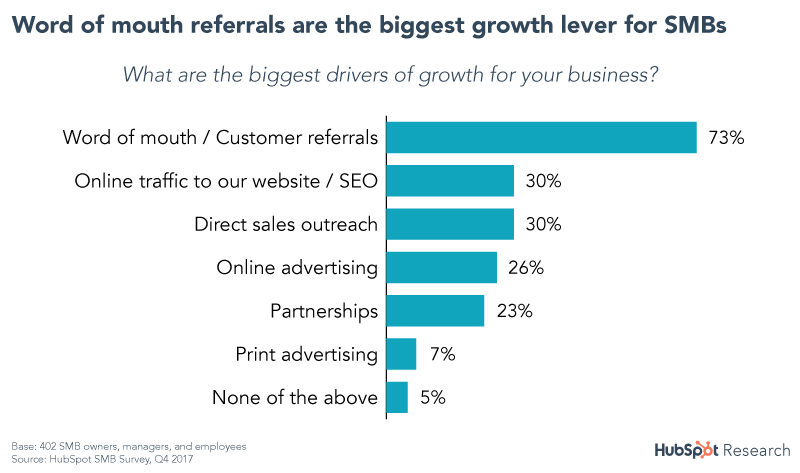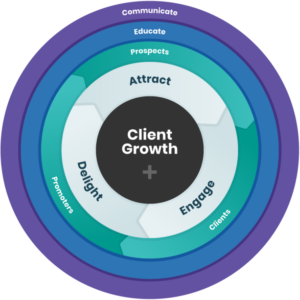Building customer loyalty is a key strategy for increasing long-term revenue for your business.
You may have heard of the 80/20 rule—also known as the Pareto Principle—which asserts that 80% of outcomes are determined by 20% of inputs. This principle can be applied to economics, business and finance, and even spending habits. There’s even evidence that 80% of a company’s revenue comes from only about 20% of their customers.
When such a substantial portion of a business’ finances balance on so few customers, it’s critical to keep those customers happy. That’s where actively building customer loyalty comes into play. Tools like HubSpot enable you to solicit feedback, thank and reward happy customers, and work to turn unhappy customers into loyal ones. In the long run, this will help boost revenue and return on investment for your business.
Table of contents
- Why customer loyalty matters to businesses
- Using social proof to build customer loyalty
- HubSpot tools to collect customer feedback
Why customer loyalty matters to businesses
According to HubSpot Research, the overwhelming majority (93%) of customers are likely to make repeat purchases from businesses who offer excellent customer service. On top of that, 60% of loyal customers will make purchases more frequently from companies they prefer. They buy more frequently and spend more—thus fulfilling the Pareto Principle.
These loyal customers will, on average, share their positive brand experiences with 11 other people. This earned word-of-mouth advertising is immeasurably valuable to businesses. In fact, 73% of businesses report that word-of-mouth referrals are the biggest driver for growth. That beats out organic website traffic, paid advertising, partnerships, print, and more.

Using social proof to build customer loyalty
Word-of-mouth referrals offer something that paid advertising or partnerships don’t—social proof. In psychology, social proof is the idea that people decide what’s correct based on what other people think is correct. Reviews from customers are over 12 times more trusted than descriptions that come from manufacturers.
Think about Amazon reviews—how long do you spend scrolling through customer reviews before you make a purchase? Chances are, you probably pay more attention to what real customers are saying versus the manufacturer’s description. This is social proof in action.
If we consider social proof in the context of inbound marketing, we can see how it ties into the flywheel model. First, feedback helps brands adjust their products or service to reduce friction caused by poor buyer experiences. Then, advocacy from happy customers increases flywheel force and helps generate more sales. On the inbound flywheel, this is the point between Attract and Delight.

HubSpot’s Service and Marketing Hubs make it extremely easy to collect, analyze, and use customer feedback to build your brand’s customer loyalty through social proof.
HubSpot tools to collect customer feedback
The first step you need to take to begin soliciting feedback from your customers. If you’re using HubSpot’s Service Hub, you can set up an automated Net Promoter Score (NPS) survey or a Customer Satisfaction (CSAT) survey to send based on a specific trigger. Many brands opt to send these types of surveys after a customer has made a purchase, but you can tailor the send trigger based on your specific feedback needs.
Net Promoter Score is a measurement of how likely your customers are to recommend, or promote, your business to their friends. Scores of 0-6 are considered Detractors, 7-8 are Passives, and 9-10 are Promoters—those are the people who are most likely to advocate for your brand.
You can also set up an automated customer support survey, which measures Customer Effort Score (CES). This is a measurement of how difficult—or easy—it is for customers to find help or answers on your website. Depending on your business needs, you can choose from these three survey types to collect useful customer feedback.
“From a business’s perspective, reviews and testimonials help businesses understand why they are retaining or losing their customers. With reviews and testimonials, companies can make educated decisions about what needs to remain the same and what needs to change to be as successful as possible. Lastly, positive reviews help convert interested consumers and leads into buyers and loyal customers.” – Kristen Baker, HubSpot
If the feedback is poor, that’s a sign that you need to make some changes to your product/service, customer service, or both. Be sure to examine responses carefully to look for opportunities for improvement. You might only need to make a small change to your website to improve user experience, or adjust your product packaging to be more user-friendly. We’ll talk more in depth about managing negative feedback from customers farther on in this blog post.
How to leverage positive feedback
Let’s say you collected feedback, and the vast majority of it was positive. Great work! That doesn’t mean you’re done—in order to delight new and existing customers, it’s critical to continue to demonstrate the value of your brand.
One way to accomplish this is to ask Promoters from your NPS survey, or satisfied customers from your CSAT survey, to write a testimonial about your business. This can be entirely automated through Service Hub using workflows.
Reviews are another great way to leverage happy customers for social proof. You may want to ask them to leave a review on your site, your Google My Business listing, or even a third-party review site such as TripAdvisor or Yelp. Sometimes customers are even prompted to share and tag themselves using a brand’s product on social media. There are many creative ways to showcase happy customers, so feel free to explore different methods.
In general, it’s a good idea to reward customers for their feedback, especially when they go the extra mile to write a review or testimonial for your business. Rewards can include early access to new tools or products you’re offering, swag, tours of your office, and discounted or free consultation sessions. In this way, you’re continuing to nurture and delight your customers—increasing the likelihood they become loyal to your brand.
How to manage negative feedback
Try as we might, it’s impossible to be perfect all the time. But that’s why it’s so important for businesses to constantly strive for improvement wherever possible. Negative feedback from customers should be seen as an opportunity to make positive changes that will convert those unhappy customers into happy ones.
Always take the time to respond to negative feedback. You can actually set up a workflow in HubSpot that will automatically open a ticket for your customer service representatives to follow up with unhappy customers. A few things you should always do include:
- Listen to understand the customer’s feelings, not just to respond.
- Talk to your coworkers about what can be done to prevent this in the future.
- Look for the learning experience and document it (learn from mistakes)!
- Take action and let the customer know you’re working to resolve the problem.
Customers want to be heard and they want to know that you and your business care about them as a person—not just their money. When you consistently work to resolve negative feedback, improve your brand’s offerings, and delight your customers, you’re building long-term customer loyalty. People will be more likely to purchase from you (and purchase more frequently), which results in increased revenue and profits. You’re happy and your customers are, too.






